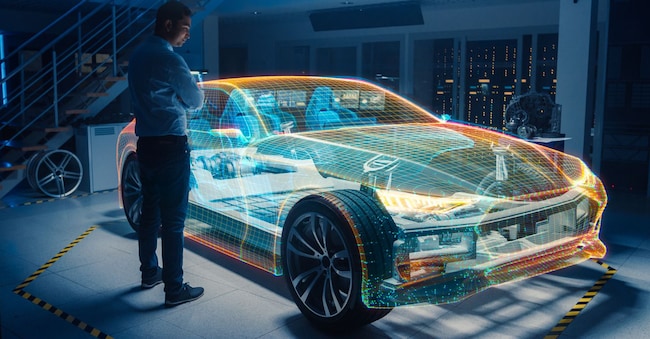The challenge for the European car? Not only electric but also AI: only one in three invests


It is open competition between Europe and China in the automotive sector. A war between giants, which is played out on the field of the type of engines, traditional or electric, as emerges from the debate in Italy and Europe, but also on the technological level, therefore Artificial Intelligence and simulation applied in the design and testing phase. "The Chinese are managing to make the difference thanks to a quality product, engineered in a much faster time": this is the summary made by the CEO of Accenture Italy, Teodoro Lio, on a sector in profound transformation, at the center of a survey carried out by the company. From which the delay of the producers and of the European supply chain emerges: the survey carried out on 3 thousand c-level at a global level reveals that only 36% have started an AI scale initiative and only 13% have obtained a significant value.
"It's a question of speed, but also of vision and method," Lio emphasizes. "AI is not just a technological accelerator," he adds, "but a lever to reinvent the entire supply chain in a targeted and conscious way: from engineering to manufacturing, from the supply chain to customer relations. In a sector under pressure, Artificial Intelligence can become the catalyst for rethinking processes and operating models, strengthening the skills of millions of workers and aligning development times with those of global best practices."
China and Chinese manufacturers were the first to adopt the Soft Defined Vehicle paradigm from scratch, without having to convert pre-existing production systems. A choice that has turned into a competitive advantage, adds Lio, as demonstrated by the case of the CARIAD platform from the German Volkswagen, a project that involved a thousand engineers for the development of an SDV platform, postponed and revised several times.
This difficulty, together with the delay for example in patents related to AI and SDV platforms and in research capacity, "causes Europe to chase the United States that chases China" explains Lio. A delay that brings risks, that affects competitiveness, time-to-market and production costs, but that represents, at the same time, an important opportunity.
The new generation platforms are capable of halving, from four to two, the years needed to develop a new model and are easy to update and reprogram. Manufacturers that have developed an electric car from scratch have started with a software defined paradigm, "this is as true for the Chinese as for Tesla or Polestar" adds Lio.
But how are European manufacturers managing to catch up? «Stellantis has launched the Stla Small, Medium and Large platforms, but is also working on the ADC, the platforms linked to Software Defined and the 2030 vision, which develop assisted driving systems, the centralized architecture of the car and the Digital Concept that looks at the interaction between driver and car» explains Lio. The fact is, however, that for many traditional manufacturers, the new hardware platforms arrived before the software ones. «In this area, we still have to see the bulk of it» adds Lio.
In Germany, for example, there is a systemic reasoning on the failure in the conversion between hardware and software in recent years, and in general on the digital transition process in the automotive sector. «The problem of the German industry is that it has not been appealing enough on electric, especially for costs, but on the other hand it is failing the transition to software because it has faced it with an approach that is too gigantic – analyzes Lio – a more agile, start-up, software-driven attitude is needed».
The challenge for European manufacturers is twofold: to develop at least 30% of SDV models, but also to use technologies to improve models produced in a traditional way to ensure competitiveness. "Beyond the SDV paradigm, AI allows us to innovate the way we design. We are talking about generative design, simulation and testing using High performing computing, technologies that allow us to test new things faster and bring them to market sooner, working in an even more collaborative and supply chain perspective," concludes the CEO of Accenture.
European manufacturers are bringing to market, between 2025 and 2026, models actually developed in 2020-21, before Chat GPT, with the risk of accumulating delays and losing appeal compared to Chinese competitors. According to Accenture, Europe can still carve out a leading role in the new automotive era, provided it knows how to act quickly and in a coordinated manner. "We don't just need an industrial response, but a federated ecosystem, made up of public-private partnerships, shared infrastructures, trained talents and trust in technologies. AI is our opportunity to return to competition - concludes Lio - but it must be brought to factories, R&D centers, design laboratories. It must be made concrete".
"In Italy - he concludes - we have all the ingredients to compete on equal terms: computational capacity, data, talent, an ethical and responsible framework. We start from a position of strength: now we need to create a system, accelerate and transform the opportunity of AI into a new season of leadership for the European automotive industry".
News and insights on political, economic and financial events.
Sign upilsole24ore





